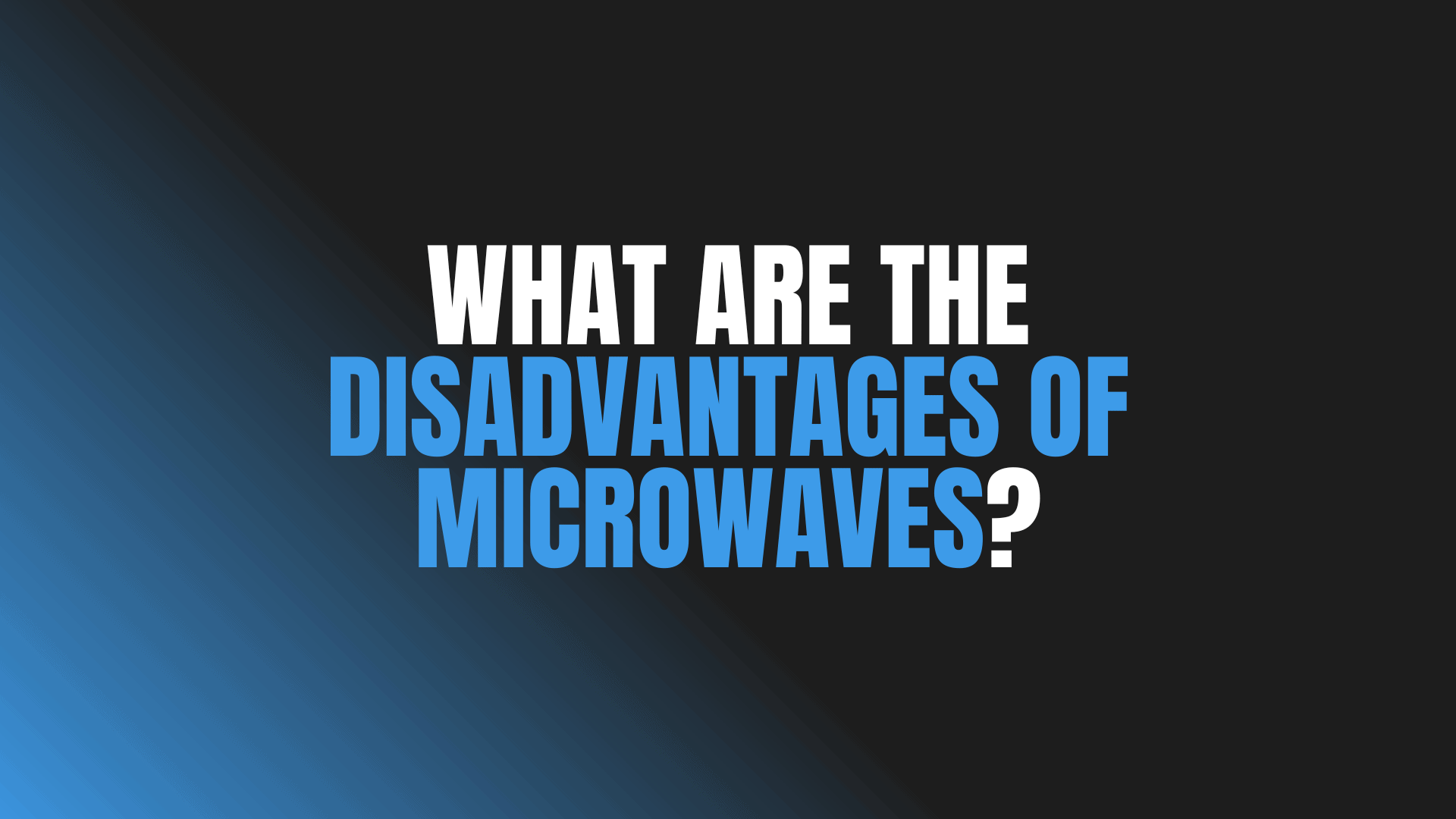
Question: What Are the Disadvantages of Microwaves?
Answer: Disadvantages of microwaves include uneven heating that can lead to food safety issues, they can dry out food, and they aren’t suitable for all cooking tasks (e.g., browning). They may also consume more energy than some conventional cooking methods.
Exploring Microwave Drawbacks
Microwaves offer speed and convenience in the kitchen. Many people rely on them for quick meals and reheating leftovers. Yet, this appliance also presents potential drawbacks worth considering. This article explores the disadvantages of microwaves, examining their impact on food, nutrition, and potential safety concerns.
We will look into the science behind microwave cooking and its effects on food composition. We will also discuss potential health implications and alternative cooking methods. Understanding these drawbacks empowers you to make informed decisions about microwave use in your home.
Uneven Heating: A Common Microwave Frustration
Microwaves often heat food unevenly. This uneven heating creates hot spots and cold spots. Some areas may become scalding hot while others remain cold. This poses a risk of burns, especially for children and older adults. It also means some parts of your food might harbour harmful bacteria.
Uneven heating stems from how microwaves work. Microwaves agitate water molecules in food, generating friction and heat. However, the distribution of water isn’t uniform in most foods. Denser areas absorb more energy, leading to hotter spots. Areas with less water stay cooler.
This issue can affect the taste and texture of food. Overcooked sections become dry and rubbery, while undercooked sections remain unappetizing. Stirring food during cooking helps somewhat, but it doesn’t eliminate the problem entirely.
Click the link to learn more about Blue Kitchen Refacing
Related Article: What Is the Disadvantage of a Convection Microwave Oven?
Related Article: Can You Cook Popcorn in a Flatbed Microwave?
Potential Health Concerns: Separating Fact from Fiction
Some people worry about potential health risks linked to microwave radiation. However, microwaves emit non-ionizing radiation, a type of low-energy radiation that does not damage DNA. Government agencies regulate microwave ovens to ensure they meet safety standards, limiting leakage of radiation to very low levels.
Another concern relates to using plastic containers in the microwave. Some plastics contain chemicals, like BPA and phthalates, that can leach into food when heated. Choose microwave-safe containers labelled as such to avoid this risk. Glass and ceramic containers generally offer a safer alternative.
Overheating certain foods, particularly water-based liquids, can lead to superheating. This occurs when a liquid reaches a temperature above its boiling point without actually boiling. Disturbing the liquid can then cause a sudden, violent eruption of hot liquid, potentially causing burns.
Altered Food Structure: Impacts on Taste and Texture
Microwave cooking can alter the structure of food molecules. This can affect the taste and texture of some foods, making them less appealing. For instance, microwaving meat can make it tough and dry, while certain vegetables can become mushy.
This alteration occurs because microwaves primarily heat the water molecules within food. This rapid heating can cause the proteins in meat to denature and coagulate quickly, leading to a tougher texture. In vegetables, the cell walls can break down, resulting in a softer, sometimes mushy consistency.
While these changes might not be noticeable in all foods, they can significantly impact the enjoyment of certain dishes. This makes microwaving less suitable for recipes requiring precise texture control.
Limited Cooking Options: Not Ideal for All Dishes
Microwaves excel at reheating and simple cooking tasks. However, they are not suitable for all types of cooking. They cannot brown or crisp food like conventional ovens or stovetops. This limits their use for certain recipes.
Microwaves lack the dry heat needed for browning and crisping. Browning reactions, known as the Maillard reaction, require higher temperatures than microwaves typically achieve. This reaction creates the desirable flavour and texture of browned or crisped foods.
Dishes requiring specific cooking techniques, such as searing, sautéing, or baking, are also difficult to achieve in a microwave. While some microwaves offer features like convection cooking, these often fall short of replicating the results of traditional methods.
Conclusion – What Are the Disadvantages of Microwaves?
Microwaves provide undeniable convenience for quick heating and cooking. Their speed makes them invaluable for busy lifestyles. However, understanding their limitations and potential drawbacks is crucial for making informed choices about their use.
Uneven heating, nutrient degradation, and the inability to brown food are factors to consider. While not necessarily dangerous, these disadvantages can affect the quality and enjoyment of your meals. By understanding these limitations, you can optimize your use of microwaves and choose alternative cooking methods when appropriate for the best culinary results and nutritional value.

Blue Malue Get in touch with Blue here.
